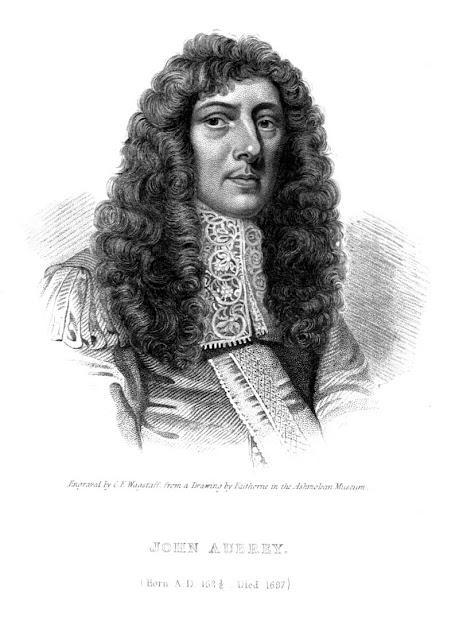Tuesday, June 5, 2012
Batcheler Chymist
Giovanni Battista Guelfi was a Roman-trained, late-Baroque sculptor active in England from 1714 to 1734. He carved two of these suave, posthumous busts of the aristocratic Robert Boyle (1627-1671), father of modern chemistry. The bust itself is, I think, endearing enough, but the actual reason it appears above is that I am rereading a particular book – Brief Lives by John Aubrey (1626-1697). On the way home from the library on MUNI this afternoon I was freshly taken with Aubrey's 17th-century eye-witness description of the same 17th-century Robert Boyle whom Guelfi was forced in the 18th century more or less to imagine.
"He is very tall (about six foot high) and streight, very temperate, and vertuouse and frugall: a Batcheler; keeps a Coach, sojournes with his Sister, the lady Ranulagh. His greatest delight is Chymistrey. He haz at his sisters a noble Laboratory, and severall servants (Prentices to him) to looke to it. He is charitable to ingeniose men that are in want, and foreigne Chymists, for he will not spare for cost to get any rare Secret. At his own costs and chardges he gott translated and printed the New Testament in Arabique to send into Mahometan countreys. He has not only a high renowne in England, but abroad and when foreigners come hither, 'tis one of their curiosities to make him a Visit."
Aubrey (above) wrote his Lives between 1669 and 1693, but never printed them. With no intention to publish during his own or his subjects' lifetimes, he was free to repeat as many unflattering truths as he chose (although his account of Boyle – and of many others – was laudatory). The Lives survived for more than a century in a single copy consisting of several fat handwritten volumes deposited by Aubrey himself in the Bodleian Library at Oxford. Not until the 19th century did scholars begin to publish them.
He collaborated as a biographical researcher with his Oxford contemporary, Anthony Wood (another writer who left cantankerous manuscripts behind in the Bodleian, like sleeping bombs intended for future detonation). I wrote a little about Wood earlier this year when a new edition of his Autobiography came out, but have been reading Aubrey this time around in a solid little hardcover issued by Harrap in 1951. The binding is a mellow red, subtly aromatic, and the text was edited by a professor with the beguiling name of Vivian de Sola Pinto.

